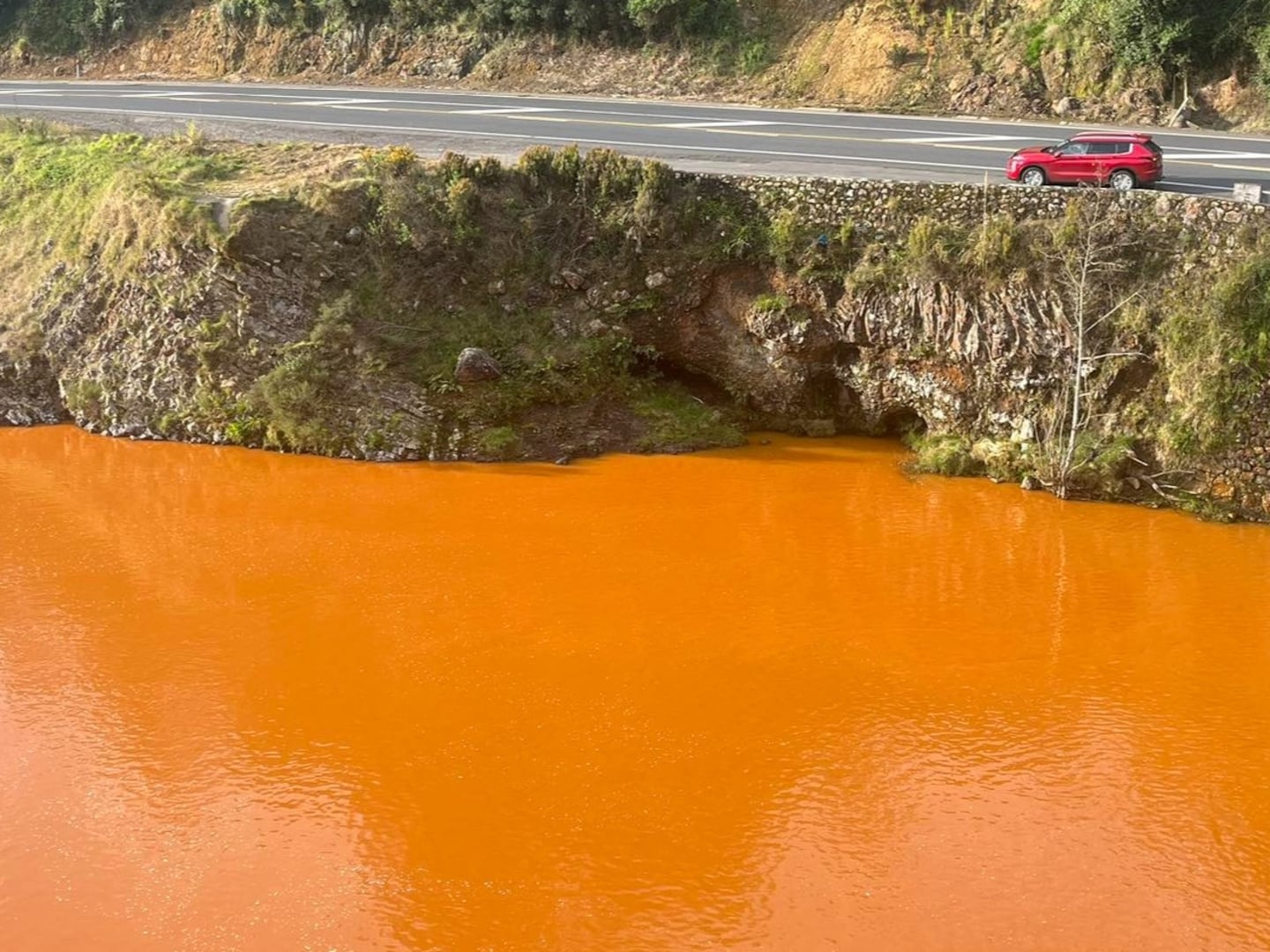An old mine shift has been confirmed as the source of Ohinemuri River’s bright orange water, throwing the spotlight on mining’s long-term impact on the environment.
It will be days - possibly as many as ten - before it’s known exactly what substances have caused the water’s discolouration.
They could include residual arsenic, heavy metals such as cadmium, chromium and antimony, and even mercury which can all be found in old mines, says Waikato Regional Council.
On Saturday, the council’s regional compliance manager Patrick Lynch confirmed the discharge point for the orange contaminant as an old mining asset in the hills above the Karangahake Gorge car park.
“We’ll be reliant on nature and rain events to be flushing that out over time,” Lynch said in a video from the scene.
“There is still sediment that has settled in the river in quiet locations or around rocks, but most of it has been flushed through the system,” he says in a council post.
“The settled sediment may be present and visible for some time, and we still advise caution as we do not know yet what it contains.
“We really want to understand how this event happened and that investigation will take time.”
Lynch said a plane was flown in a grid pattern over the Firth of Thames to see if there was a sediment plume but there was no distinctive orange sediment to be seen.
“With the tidal action and volume of water, the orange sediment appears to have dissipated.”
‘Harrowing’ images of river
Advocacy group Coromandel Watchdog of Hauraki - which is focused on keeping mining out of the area - said kaumātua from local hapū and iwi have told them miners used the river as a sludge channel discharging up to 800 tonnes per day from the 1890s to 1950s.
“But as this week’s event shows, it’s not over,” Coromandel Watchdog chairperson and former Green Party MP Catherine Delahunty said in a release.
“Until we see the test results we won’t know the damage, but we already know that toxic heavy metals persist in the environment and that the impact on the Ohinemuri river and the species living in [it] will not be good.
“The Ohinemuri River also runs into the Waihou River and thus into the Hauraki Gulf. Dilution does not solve the problem, it merely redistributes it further afield.”
The Green Party in a separate release described the images of a “severely polluted” Ohinemuri River as “harrowing”, arguing the situation could become “a more common occurrence” under the mining regime the Government is looking to roll out.
“The state of the Ohinemuri river paints a picture of what the future looks like if the Government unleashes mining across the country,” said Green Party spokesperson for Resources Steve Abel.
“The desecration of the Ohinemuri river with waste from an old mining shaft is a stark example of the toxic legacy mining leaves behind.
“Ruined nature haunts communities long after the jobs have dried up and the profits have been funnelled overseas.
“Meanwhile, the Luxon Government looks set to fast-track a laundry list of mining projects that will throw our natural world into even further disarray.”
‘We have listened to concerns’
In May, Minister for Resources Shane Jones told Waatea News mining would provide a boost for working class Māori.
“I resent the fact I’m expected every day to justify in some sort of moral sense us using our natural resources, I’ve moved beyond that. Our natural resources are available for exploitation,” he said.
“Yes, we need to ensure we rehabilitate land but this notion the green activists are putting around that it is some sort of ecological cancer to go mining just suits their middle-class, irrelevant views which are hostile to the interests of working class people which is why I dismiss them.”
On Sunday, the Government announced changes to its proposed plans for fast-tracking consent processes for mining and other infrastructure projects following public backlash, announcing ministers will no longer have the final say on green-lighting projects.
“We have listened to the concerns of many submitters,” RMA Reform Minister Chris Bishop said, together with Jones.
Final decisions would now sit with an “expert panel”.
The panel will include expertise in environmental matters, an iwi authority representative only when required by Treaty settlements, and Māori development and te ao Māori expertise in place of mātauranga Māori.
“New Zealand has a housing crisis, a massive infrastructure deficit, and very ambitious climate change targets. Fast-track will be a huge step forward toward addressing this trifecta of challenges for government and the private sector alike.”



